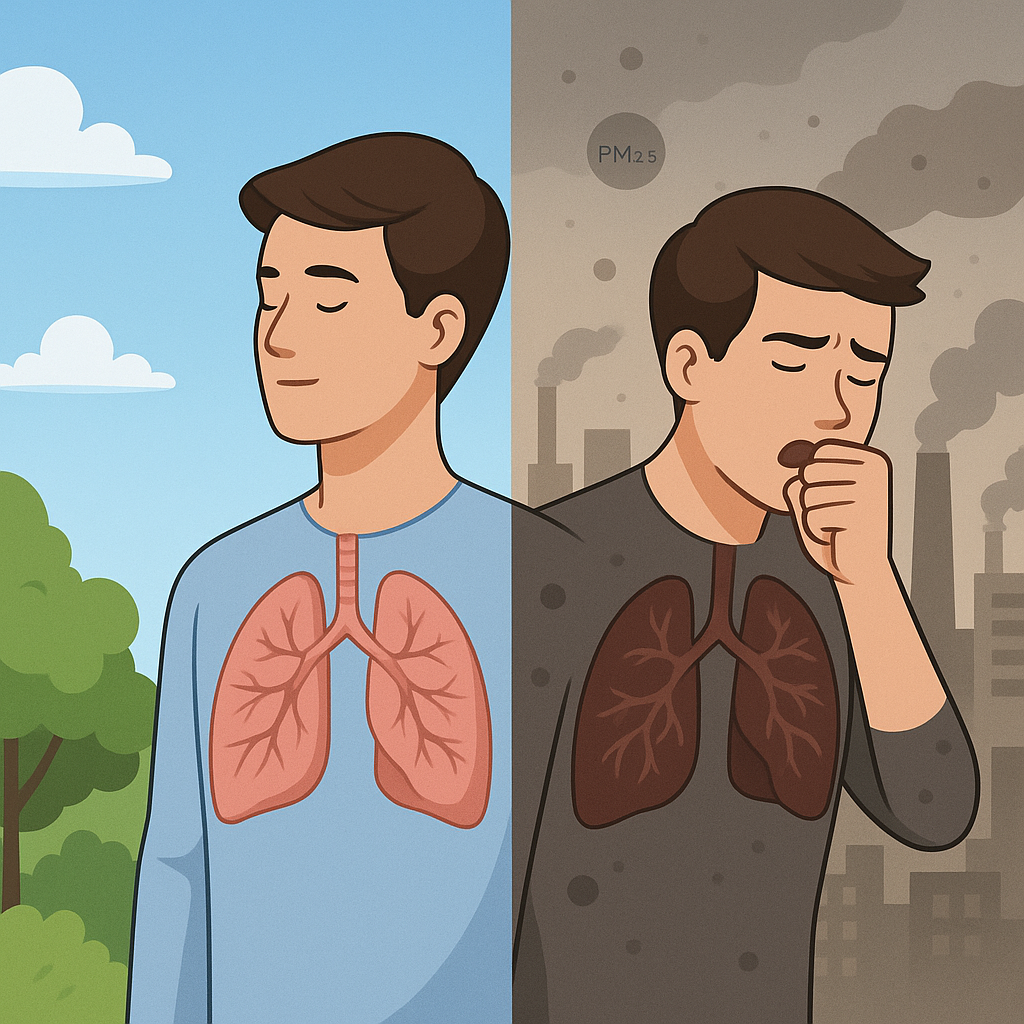Air quality plays a vital role in human health, particularly in relation to the respiratory system. Inhaling polluted air introduces harmful particles and chemicals into the lungs, leading to both short- and long-term health effects. Research and clinical insights—such as those shared by Dr. Barbara O’Neill, a renowned health educator—underscore the strong link between air pollution and various respiratory disorders. This article explores that connection and offers natural, preventive strategies to protect lung health.
How Does Air Pollution Cause Respiratory Diseases?
The answer lies in the respiratory system’s natural defenses. When functioning optimally, the lungs filter out particles and pathogens through the action of cilia, mucus, and immune cells. However, air pollutants such as particulate matter (PM2.5), ozone, nitrogen dioxide, and volatile organic compounds (VOCs) bypass these defenses over time.
Chronic exposure to polluted air damages the delicate lining of the respiratory tract. This leads to cilia dysfunction, excess mucus production, and persistent inflammation. Over time, these processes compromise oxygen exchange and pave the way for respiratory diseases.
Common Respiratory Diseases Linked to Poor Air Quality
Scientific literature and natural health sources agree that the following respiratory disorders are strongly associated with poor air quality:
- Asthma – Triggered or worsened by airborne allergens and chemical irritants.
- Bronchitis (acute or chronic) – Inflammation of the bronchial tubes due to repeated irritation.
- Chronic Obstructive Pulmonary Disease (COPD) – A progressive disease marked by airflow obstruction.
- Pneumonia – Often exacerbated by a weakened respiratory immune response from pollutant exposure.
- Emphysema – Damage to alveoli leading to breathlessness.
- Lung cancer – Long-term exposure to carcinogenic particles such as benzene or diesel soot can initiate malignancies.
Why Pollution Causes Respiratory Disorders
Pollution causes oxidative stress in the lungs. This leads to DNA damage, cell death, and chronic immune activation. When the lungs’ detoxification capacity is overwhelmed, waste materials accumulate. This can suppress local immunity, increase infection risk, and reduce lung elasticity.
The respiratory system and associated disorders arise not only from outdoor pollution but also from indoor contaminants—such as mold spores, synthetic cleaning products, and cigarette smoke.
Natural Ways to Cleanse and Protect the Lungs
Several natural remedies to counteract the harmful effects of poor air quality:
1. Steam Inhalation
Add a few drops of eucalyptus, thyme, or peppermint essential oil to hot water. Inhale to loosen phlegm and support cilia regeneration.

2. Herbal Teas
Herbs such as mullein, ginger, licorice root, and elecampane have expectorant and anti-inflammatory properties that aid lung detoxification.

3. Antioxidant-Rich Foods
Cruciferous vegetables, onions, garlic, and carrots help neutralize free radicals and reduce inflammation in lung tissue.

4. Breathing Exercises
Practicing deep breathing, especially in natural, unpolluted environments like forests or seaside areas, enhances lung capacity and oxygen uptake.
The Global Burden of Air-Related Respiratory Disorders
According to the World Health Organization (WHO), over 90% of the world’s population breathes air that exceeds safe pollution limits. Air pollution is responsible for approximately 4.2 million deaths annually, many due to respiratory conditions. Children, the elderly, and individuals with pre-existing conditions are particularly vulnerable.
In developing and industrialized countries alike, the prevalence of respiratory diseases is rising—driven by traffic emissions, industrial waste, wildfire smoke, and indoor pollutants.
What Measures Can You Take?
To prevent respiratory disorders related to air quality:
- Monitor your local Air Quality Index (AQI)
- Use HEPA air filters indoors
- Avoid using synthetic air fresheners or harsh cleaning agents
- Wear masks when exposure is unavoidable
- Spend time in fresh-air environments like forests or mountains
- Practice daily lung detox routines.
Final Thoughts: Air Quality and Respiratory Health
There is a clear connection between air quality and respiratory diseases. The effects are not only physical but can also reduce energy, sleep quality, and overall well-being. Dr. Barbara O’Neill advocates for natural, holistic approaches to support the lungs and limit exposure to airborne toxins. Whether you live in an urban or rural area, understanding and acting on this connection is crucial for long-term health.
Tags: air pollution and lung health, respiratory diseases due to poor air quality, how air quality affects breathing, Dr. Barbara O’Neill lung health remedies, lung detox naturally, air pollution and asthma, natural ways to support respiratory health



